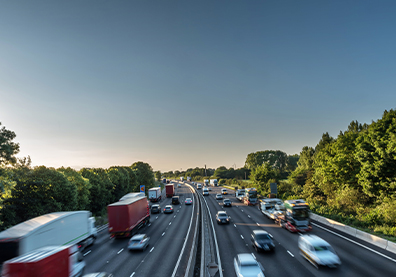We use cookies to make your experience better. To comply with the new e-Privacy directive, we need to ask for your consent to set the cookies. Learn more.


Clean Air Zones Explained
Otherwise known as CAZs, Clean Air Zones are gaining momentum in the UK as an effective strategy to combat air pollution and improve the quality of the air we breathe. With concerns about public health and the environment on the rise, implementing CAZs has become a crucial step toward creating cleaner and healthier communities. In this blog, we’ll delve deeper into what Clean Air Zones are, why we have them, how they function, and where to find them across the UK.
What are Clean Air Zones?
A Clean Air Zone is an area designated by local authorities to manage and reduce air pollution levels. These zones aim to encourage low-emission vehicles, promote sustainable transport alternatives, and ultimately improve air quality for residents, workers, and visitors. CAZs typically restrict or charge higher fees for the most polluting vehicles entering the zone, creating an incentive for drivers to choose cleaner alternatives.
Why do we have Clean Air Zones?
The government introduced Clean Air Zones (CAZs) in response to growing concerns about air pollution and its impact on public health and the environment. Air pollution is linked to various respiratory and cardiovascular diseases, and poses a significant threat to vulnerable populations.
By implementing CAZs, the government aims to reduce harmful emissions and in turn protect public health, mitigating climate change, and creating cleaner, healthier communities for all.
Are there different types of Clean Air Zones?
The UK has introduced two primary types of Clean Air Zones: Charging Zones and Non-Charging Zones.
- Charging Zones: Charging zones impose a fee or charge on vehicles that fail to meet specific emission standards. The fees are designed to discourage the use of highly polluting vehicles within the designated area. The charges are typically higher for vehicles that do not comply with the emission standards, while low-emission and zero-emission vehicles are often exempt from these fees.
- Non-Charging Zones: Non-charging zones, also known as low-emission zones, restrict access to certain vehicles based on their emissions. These zones often prioritize cleaner vehicles by encouraging low-emission and zero-emission transport options. Unlike charging zones, non-charging zones do not impose a direct fee, but rather focus on creating cleaner environments by reducing the number of high-polluting vehicles on the roads.
Where are the Clean Air Zones?
Clean Air Zones have been introduced in various cities across the UK to tackle air pollution and prioritize public health. Some of those key cities include:
- London: London implemented the Ultra Low Emission Zone (ULEZ) in central London in April 2019. It charges fees to vehicles that do not meet specific emission standards. The zone expanded in October 2021, covering a larger area.
- Birmingham: Birmingham introduced its Clean Air Zone in June 2021. Non-compliant vehicles entering the zone are subject to charges, targeting older, more polluting vehicles. This initiative aims to improve air quality in the city centre.
- Bath: Bath established a Clean Air Zone in March 2021. Non-compliant vehicles are charged for entering the designated area, with the aim of reducing nitrogen dioxide levels and enhancing air quality in the city.
- Manchester: Manchester's Clean Air Zone was scheduled to launch in May 2022 but was delayed due to the COVID-19 pandemic. Once implemented, it will target non-compliant vehicles, aiming to reduce harmful emissions and improve air quality in the city.
- Glasgow: Glasgow's Low Emission Zone was launched in 2018, making it the first city in Scotland to establish such a zone. The zone prioritizes low-emission vehicles and sets emission standards for vehicles entering the city centre.
To see the full list of Clean Air Zone locations in the UK, and find out more about upcoming locations, head to gov.uk.
Go sustainable with an electric or hybrid car
In a growing world of clean air zones, tax incentives, and increasing consumer consciousness, there are more reasons every day to take the leap into the world of Electric and Hybrid cars. Beyond the benefits of switching to EV or Hybrid, it feels good to decrease your carbon footprint, and we’re on hand to support you in taking that step!
